Thomas May's Blog, page 4
June 18, 2025
Esa-Pekka Salonen’s San Francisco Farewell
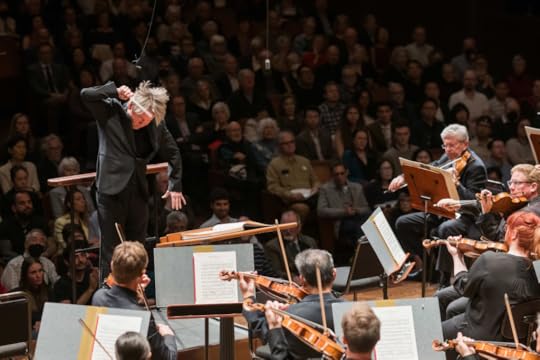 Esa-Pekka Salonen with San Francisco Symphony; photo (c)Brandon Patoc
Esa-Pekka Salonen with San Francisco Symphony; photo (c)Brandon PatocI was fortunate to have a chance to make it to Esa-Pekka Salonen’s very final performance of his San Francisco Symphony tenure – a program of Mahler 2.
Here’s my review for Musical America:
SAN FRANCISCO—“You have a great orchestra—take good care of it,” Esa-Pekka Salonen exhorted the capacity crowd at Davies Symphony Hall on Saturday night/June 14, following a 15-minute wave of jubilant applause and earsplitting cheers.
June 14, 2025
Setting a New Standard: The Guayaquil Chamber Players
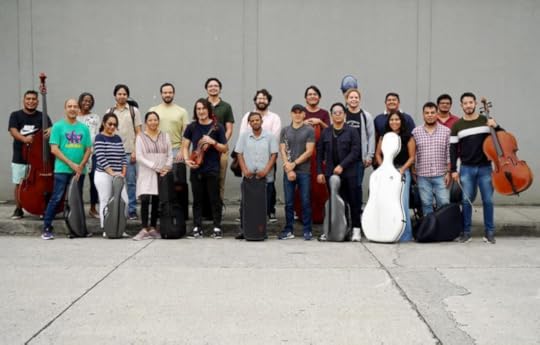
I spoke with Ecuadorian violinist Alex Jimbo-Viteri about his new Guayaquil Chamber Players initiative and their upcoming inaugural concert:
Driven by a passion to improve the quality of music-making in his native country, Ecuadorian violinist Alex Jimbo-Viteri, 38, recently founded the Guayaquil Chamber Players (GCP). This artist-led collective, based in Ecuador’s largest city, seeks to address what Jimbo-Viteri and his colleagues have come to see as a pervasive sense of complacency in the local classical music scene.
continue
June 5, 2025
Ojai Music Festival 2025
And it begins! Ojai Music Festival launches its 79th edition today, 5 June, and will be streaming the concerts at Libbey Bowl on the OMF homepage at OjaiFestival.org and on the festival’s YouTube channel.
Writing the OMF program notes is always an immersive experience, but this year’s festival programming by Music Director Claire Chase has proved to be the most fulfilling since I began writing for the festival. The 2025 edition also carries a bittersweet resonance since Artistic and Executive Director Ara Guzelimian just announced that he will conclude his tenure with the 2026 OMF.
So many highlights to look forward to over this extended weekend, which showcases the incredible community of fellow artists with whom Claire Chase has chosen to collaborate. In the spotlight tonight are Marcos Balter and his epic Pan – a signature contribution to Chase’s ongoing Density 2036 project – and Annea Lockwood’s bayou-borne, an homage to the late Pauline Oliveros, her close friend, mentor to Chase, and a tutelary spirit watching over the music-making at Ojai.
You can find the entire program book here.
May 27, 2025
Queer Baroque: Sound Salon Explores Identity in Baroque Music
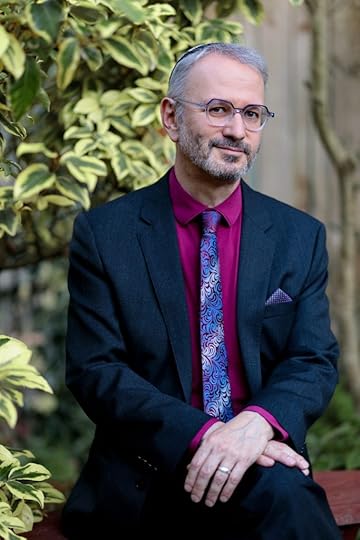 Byron Schenkman, founder and artistic director of Sound Salon; photo (c) Shaya Lyon
Byron Schenkman, founder and artistic director of Sound Salon; photo (c) Shaya LyonQueer Baroque, the final program of Sound Salon’s season, salutes Pride Month with a blend of 17th-century drama and 21st-century insight to celebrate musical and personal otherness. Two performances: May 30 at 7.30pm at the Royal Room (5000 Rainier Ave S.) and May 31 at 7.00pm at the Good Shepherd Center (4649 Sunnyside Ave N.); tickets are “pay-as-you-wish, “with a suggested price of $36 and a minimum of $1.
Baroque music thrives on extremes. For harpsichordist Byron Schenkman, its emotional volatility and theatrical flair – hallmarks of a musical language that flourished in 17th- and early 18th-century Europe – hold special resonance for contemporary audiences and performers alike.
That belief underpins Queer Baroque, the final program of the season for the chamber music series Sound Salon, which Schenkman (they/them) founded and directs. They will be joined by multi-instrumentalist and composer Niccolo Seligmann (they/them) and male soprano Elijah McCormack (he/him) for two performances to mark the start of Pride Month with an imaginative – and often playful – exploration of identity and otherness through the lens of Baroque music.
The concept for the program goes back to the mid-1990s, spanning a period of profound cultural shifts – both in Seattle’s LGBTQ+ community and in the broader evolution of how queerness, and those who embody it, are seen, represented and understood.
“Thirty years ago, I helped plan a concert called ‘Queer Baroque,’ featuring musicians from Seattle Baroque Orchestra – and it nearly got canceled,” Schenkman recalls. When the presenting board at the time asked them to change the name in order to receive funding, they refused. “It generated so much buzz that the concert ended up being packed and was a big success. But one of the board members resigned over it.”
About a year and a half ago, as Schenkman began planning a version of the program updated to reflect a more expansive understanding of queerness, they assumed the moniker “Queer Baroque” no longer conveyed the edginess it once had. But in light of rising anti-LGBTQ+ rhetoric, particularly targeting trans communities, the title – and the conversation around it – feels urgent again.
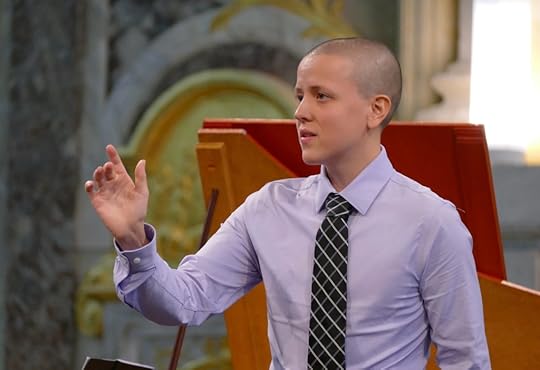 Elijah McCormack
Elijah McCormack“At a time when we see ‘deviants’ scapegoated for so many social ills, I think this is an important program,” says McCormack, a transgender singer who specializes in early music. “Queer identities have been medicalized and classed as inherently disordered. It’s not new for these things to be pathologized or demonized.”
The program combines vocal and instrumental music from the 17th and 18th centuries to consider what it means to be seen as “other.” In the Baroque era, that otherness was often manifested in portrayals of madness in songs and stage works.
“This fascination with madness in the 17th century reflects a change in society’s attitude that led to people perceived as ‘crazy’ being put into institutions – behind bars – where the ‘normal’ people would come to look at them,” says Schenkman, who describes themself as “a queer Jewish keyboard player and scholar.”
By the 19th century, they add, “the idea of madness had become entangled with gender and sexuality: to be overly emotional, feminine or sexually expressive was often pathologized as insanity. Being queer, being feminine and being ‘crazy’ were increasingly seen as overlapping.”
That entanglement between emotional excess and perceived deviance plays out in several of the program’s vocal works. Barbara Strozzi’s cantata L’Astratto is a comic mad scene in which the singer cycles unpredictably through emotions and musical styles, unable to settle on one. “It’s also a kind of self-portrait of someone trying to locate themselves through art,” Schenkman says.
For McCormack, the piece culminates “in a touching sort of lament about the perils of losing yourself, even your own mind, in the love of someone else.”
He also performs Élisabeth Jacquet de la Guerre’s cantata Susanne, a retelling of the biblical story of Susanna and the Elders. “It’s so common for women – and people perceived as women – to be punished for maintaining agency over their own bodies,” McCormack says. “I imagine that, for Jacquet de la Guerre, it was powerful to set a text about a heroine who defies the entitlement of men in authority. It’s still powerful today.”
Another vocal highlight is Henry Purcell’s From Rosy Bowers, a theatrical song in which a chambermaid feigns madness to trick Don Quixote. “Here we have a woman pretending to be crazy to manipulate a character created by a male writer and composer,” Schenkman says. “It’s like putting on a drag show: playing with the stereotypes and tossing them on their heads. Some of that happens musically as well.”
Not all of the program’s queerness is textual or narrative. Some of it lies in performance choices themselves – like Seligmann playing a movement from one of Jacquet de la Guerre’s violin sonatas on the bass viol, a bowed, fretted string instrument from the Baroque era that’s typically used for lower lines. Schenkman likens the transposition to subverting gender expectations: “What’s a high voice supposed to do? What’s a low voice?”
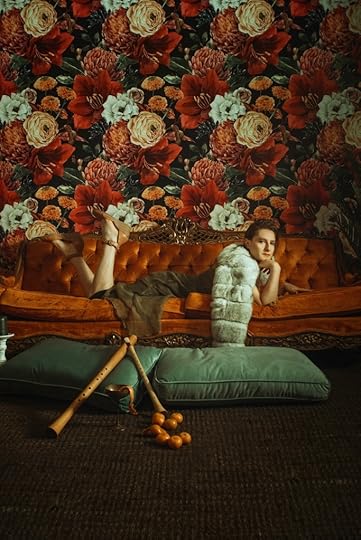 Niccolo Seligmann; photo: Anna Schutz
Niccolo Seligmann; photo: Anna Schutz“This program uses Baroque music to celebrate that queerness is not just one thing,” Seligmann says. “It’s a rich panoply of experiences that intersect with other axes of identity, including the time period.”
Seligmann, whose playing has been widely heard both in live concerts and on soundtracks like the Netflix series The Witcher, also contributes an example of their work as a composer. McCormack will sing a scene from Seligmann’s Julie, Monster: A Queer Baroque Opera, inspired by the life of Julie d’Aubigny (1673-1707), a genderfluid opera diva and swordfighter. Seligmann describes the excerpt as “a queer seduction aria that proposes more egalitarian ways of sharing intimacy,” connecting Julie “with a herstory of gender rebels” and today’s audiences “with queer ancestors for us to honor and celebrate.”
For Schenkman, who has long blended scholarship with activism, the concept of “Queer Baroque” continues to resist classification. “We’re all a little queer, and a little not,” they say. “The problem isn’t difference. The problem is pretending there’s only one normal way to be. I want whoever’s in the room to enjoy looking at different ways people diverge from norms – and celebrate it.”
Dover Quartet in Seattle
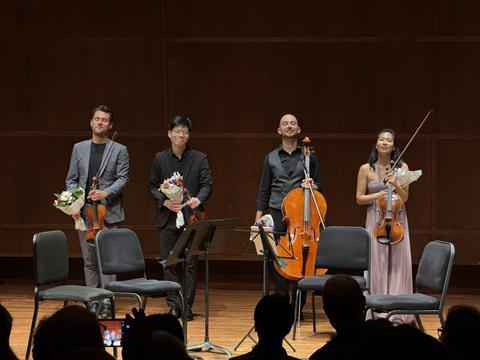 Dover Quartet: Joel Link, Bryan Lee, Camden Shaw, Julianne Lee; photo: Jorge Gustavo Elias
Dover Quartet: Joel Link, Bryan Lee, Camden Shaw, Julianne Lee; photo: Jorge Gustavo EliasMy review for The Strad of this past weekend’s Dover Quartet performance, presented by Seattle Chamber Music Society:
On a glorious spring Sunday in Seattle, the Dover Quartet drew a full house to the 536-seat Nordstrom Recital Hall for a splendid afternoon concert – no small feat given the lure of sunshine and blue skies on a holiday weekend. Notably, the audience included a sizable contingent of younger listeners – a testament to the Seattle Chamber Music Society’s outreach efforts and to the appeal of this Signature Series concert, which closed the organisation’s inter-season extension between its winter and summer festivals.
continue
May 23, 2025
Philip Glass: Symphony No. 11
View this post on InstagramA post shared by Philip Glass (@philipglass)
I had the honor of writing the program note for this week’s performances of Philip Glass’s Symphony Np. 11 by the New York Philharmonic, with Gustavo Dudamel conducting:
It wasn’t until he was 54 that Philip Glass began writing symphonies. With Symphony No. 1 in 1992, he opened up a new creative frontier that has remained an essential part of his work ever since….
May 19, 2025
Anna Thorvaldsdottir: Notes on a First Concerto
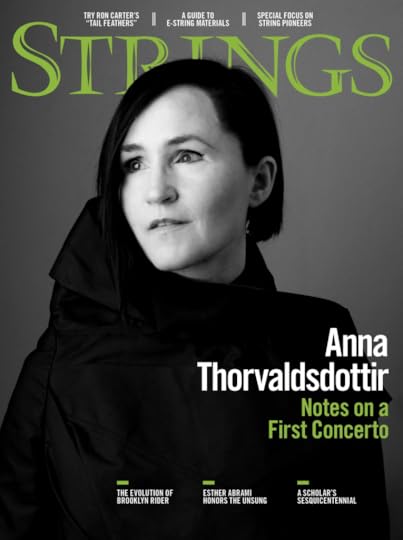
San Francisco Symphony just gave the world premiere of Before we fall, Anna Thorvaldsdottir’s new cello concerto for Johannes Moser, with Dalia Stasevska on the podium.
My behind-the-scenes feature on its creation is the current Strings magazine cover story.
Here’s Lisa Hirsch’s review for the San Francisco Chronicle:
“Thorvaldsdottir’s new cello concerto, Before We Fall, is a banger, sonically and intellectually, dense with ideas and meriting repeat hearings. It launches explosively, which is not an unusual strategy for a concerto, but don’t be misled. This isn’t a conventional soloist-versus-orchestra showdown….
continue
May 18, 2025
Seattle ProMusica at St. James: “The Charged World”
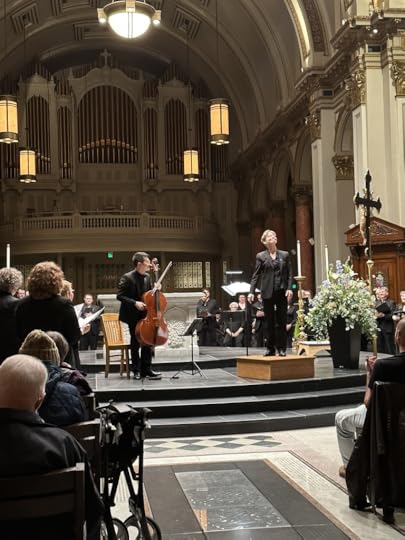
Chapeau to Karen P. Thomas and Seattle Pro Musica, whose various sub-ensembles sang sublimely and with luminous grace in last night’s season finale program – and to Nathan Chan, the eloquent cello soloist in Caroline Shaw’s “Its motion keeps,” Roxanna Panufnik’s “All shall be well,” and Thomas’s own “The world is charged,” a striking new work for cello and choir that closed a radiant evening in the warmth of St James Cathedral.
So many signature Pro Musica moments in this gorgeous program — from the perfectly contoured phrasing of Biebl’s beloved “Ave Maria” and the subtle rhythmic lilt of Shaw to a wrenching account of Herbert Howells’s Requiem, an a cappella expression of private grief laid bare. Britten’s inspired Auden setting in “Hymn to Saint Cecilia” found clarity and proportion in Thomas’s lucid direction.
Thomas also revealed her compositional eloquence in “The world is charged” – an imaginative and affecting setting of Gerard Manley Hopkins’s “God’s Grandeur,” which grapples with modern humanity’s estrangement from the natural world. I admired her musical evocation of Hopkins’s dense syntax and imagery, and of the quiet hope for renewal that pulses through the poem.
May 17, 2025
John Adams’s “Antony and Cleopatra” Arrives at the Met
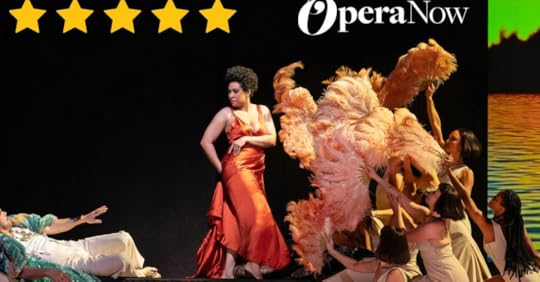
Some thoughts on the Metropolitan Opera’s new production of Antony and Cleopatra by John Adams, published by Opera Now:
With its arrival on the stage of the Metropolitan Opera, Antony and Cleopatra reaches its most convincing form to date. John Adams’s newest opera has already had productions by co-commissioners San Francisco Opera (2022) and Barcelona’s Gran Teatre del Liceu (2023). As is customary with Adams, each outing has brought revisions — most conspicuously in trimming the score, a process he has continued for the Met version….
May 16, 2025
Fire, Water, Secrets, and Memory: Tan Dun Returns to Seattle Symphony
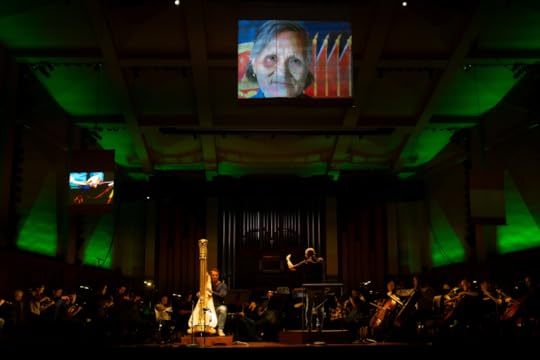 Tan Dun conducting Seattle Symphony, with harpist Xavier de Maistre; photo (c) James Holt / The Seattle Symphony.
Tan Dun conducting Seattle Symphony, with harpist Xavier de Maistre; photo (c) James Holt / The Seattle Symphony. A concert built around the artistry of composer, conductor, and cultural connector Tan Dun offers no shortage of conceptual fascination. This week’s concerts mark his turn to the Seattle Symphony podium after a memorable debut here two and a half years ago, when he led his monumental Buddha Passion.
Raised in a remote village in China’s Hunan province and shaped equally by Western classical forms and ancient Chinese traditions, Tan – who since 1986 has been based in the US – brings a theatrical imagination and a deep sense of ritual to the concert stage. He framed last night’s program with a pair of short but intensely colorful works by two early 20th-century composers he admires, serving as explosive preludes to two large-scale pieces from his own catalog.
A vivid reading of Manuel de Falla’s Ritual Fire Dance, from his 1915 ballet El amor brujo, crackled with rhythmic energy and flared with instrumental color, setting one element against another as water came into protracted focus in the ensuing Concerto for Water Percussion and Orchestra, composed by Tan in 1998 and dedicated to Tōru Takemitsu.
Tan draws out music’s ritual origins in intriguing ways. Percussionist Yuri Yamashita not only performed the solo part but dominated much of the piece with an almost shamanistic stage presence – from the way she mindfully released droplets from her fingers to the immersive sound world she conjured using bowls of wood or glass, as well as gongs dipped mesmerically into one of two large water bowls over which she presided.
At some moments she even softly vocalized, as if engaged in a conjuring. Enhancing the theatrical experience were three video screens suspended above the orchestra –- one large at center and two smaller flanking it – which projected close-up footage of the bowls and the rippling water, inviting the audience into the tactile, elemental, organic world of the piece.
The orchestra functioned as a kind of elemental chorus, not so much a counterpart as a kaleidoscopic resonator. Specific voices occasionally emerged from the fabric – most memorably in a luminous duet between Yamashita and principal cellist Efe Baltacıgil, whose tone seemed to bloom out of the water’s surface. A long, improvisatory cadenza captivated with its focus on the physicality of sound.
Still, the Water Concerto’s meditative pacing and episodic structure began to feel diffuse over the span of the piece – though whether this observation reflects a Western bias about form or a real imbalance in proportions is a fair question. In any case, this was a welcome opportunity to hear the work in live performance.
After intermission came a brisk, glittering account of Stravinsky’s Feu d’artifice (Fireworks), a four-minute burst of orchestral color dating from a little before the young Russian’s leap to international fame with The Firebird.
To this taste, the highlight of the program was Nu Shu: The Secret Songs of Women – a 13-part multimedia concerto that unfolded with greater emotional clarity and formal cohesion than the Water Concerto. Nu Shu originated as a commission for a harp concerto from the Philadelphia Orchestra but, inspired by Tan’s immersive research into a little-known linguistic and social tradition from his native Hunan Province, grew into a sui generis fusion of concerto, orchestral narrative, and ethnomusicological-sociological documentary.
The “secret songs” in question have to do with the vanishing Nüshu tradition — a secret, invented language once used by women in rural Hunan to communicate among themselves in calligraphy and through chanting and song. Tan painstakingly researched the small community of remaining Nüshu speakers, capturing their voices and stories in multiple videos.
Nu Shu unfolds in 13 short video portraits created by the composer and his team – shown on the three screens above the stage – each anchored in the landscapes of the women’s daily lives and their stories of isolation and solidarity, which are shared from generation to generation.
For Tan, the harp represents “the most feminine of instruments,” writes Esteban Meneses in his excellent program note, and serves as “an intermediary between what the composer imagines as the future – the Western orchestra – and the past, represented by the microfilms.”
Xavier de Maistre was the eloquent soloist, playing a kind of bard who mediates these stories and showing remarkable dynamic and expressive range. Tan likewise assigns a crucial narrative role to the orchestra, which acted as a bridge translating memory into something shared and immediate.
Repeat performance on Friday, May 16, at 8 pm.
(c)2025 Thomas May
Thomas May's Blog



